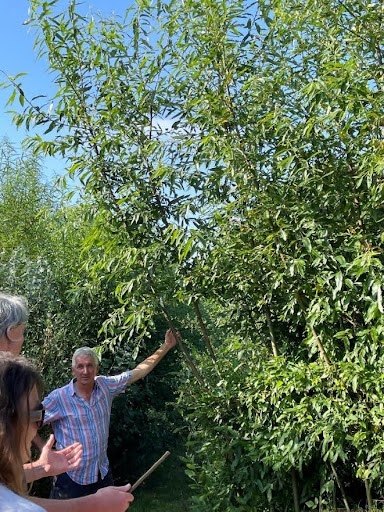

On a very warm evening in July, a group of farmers met at Arbor Farm near Indian Queens to hear from forester Steve Evans about the benefits that trees can provide. This event was made possible thanks to the National Lottery Community Fund who fund the Farm Net Zero project.
Date of Event: Wednesday 9th July 2025
Host: Steve Evans, Arbor Farm
Arbor Farm is a two-acre tree nursery on a Cornwall Council farm. The field is very wet and was previously grassland. Steve Evans has a twenty-year tenancy that began in 2021. He planted a kilometre of tree alleys (mostly willow, alder and poplar) soon after arriving, and these are now well established. In theory, Steve must remove the trees at the end of the tenancy, and he is confident that the trees will have improved the soil conditions throughout the tenancy.

Steve led a useful discussion on how to integrate trees into agriculture, both as a crop (fruit or timber) and as infrastructure (boundaries and shelter). Steve’s main advice was to ensure that trees have the best chance of establishment. This should primarily be achieved by keeping the trees free of competing vegetation. Steve recommends cutting and inverting the turf around each tree, then mulching to prevent regrowth (either with woollen mulch mats, waste wool or wood chip). Steve added that when establishing a new hedge, it’s not always necessary to use the recommended five stems per metre, it’s possible to use two good-sized stems and lay them. In addition, stakes and guards are not always needed, as exposure to wind can help to strengthen trees.
Tree species selection depends on the site, but Steve favours willow, alder and poplar for livestock farms. All of these are edible by livestock, with some research suggesting that alder leaves are 15% protein and poplar 24% protein. Willow is well known for its mineral content, as well as containing salicin which is the natural precursor to aspirin, with different willow varieties containing varying levels. These species also grow vigorously, so respond well to livestock browsing. This vigorous growth also assists the establishment of the trees, so that they can more quickly provide benefits to the farm. On-going maintenance, including coppicing and pollarding was discussed, which can be particularly useful if there any concerns over potential competition between the trees and neighbouring crops, as this can help to control root growth. Steve added that leafy growth can be cut, chipped and fed to livestock, alternatively cuttings from willow can be easily propagated by planting directly into soil to increase your tree stock.
The hot weather that evening provided a valuable demonstration of the power trees have to create microclimates across farms. The shade cast by the trees made for much more comfortable conditions within Arbor Farm; this is something that is important for farmed livestock, as discussed in a previous FNZ event with Lindsay Whistance in 2023. Improving the health and welfare of livestock is a critical responsibility of farmers but also helps to maintain their productivity. Improving the productive efficiency of livestock helps to lower the carbon footprint per kilo of product. Combined with the carbon sequestered directly into the trees themselves, the case for agroforestry as a climate solution continues to grow.
Key takeaways
- Trees create a microclimate which improves livestock health and welfare, and therefore increases productivity.
- When planting trees, it is vital to control weeds. Planting is easy. Don’t neglect watering and weeding.

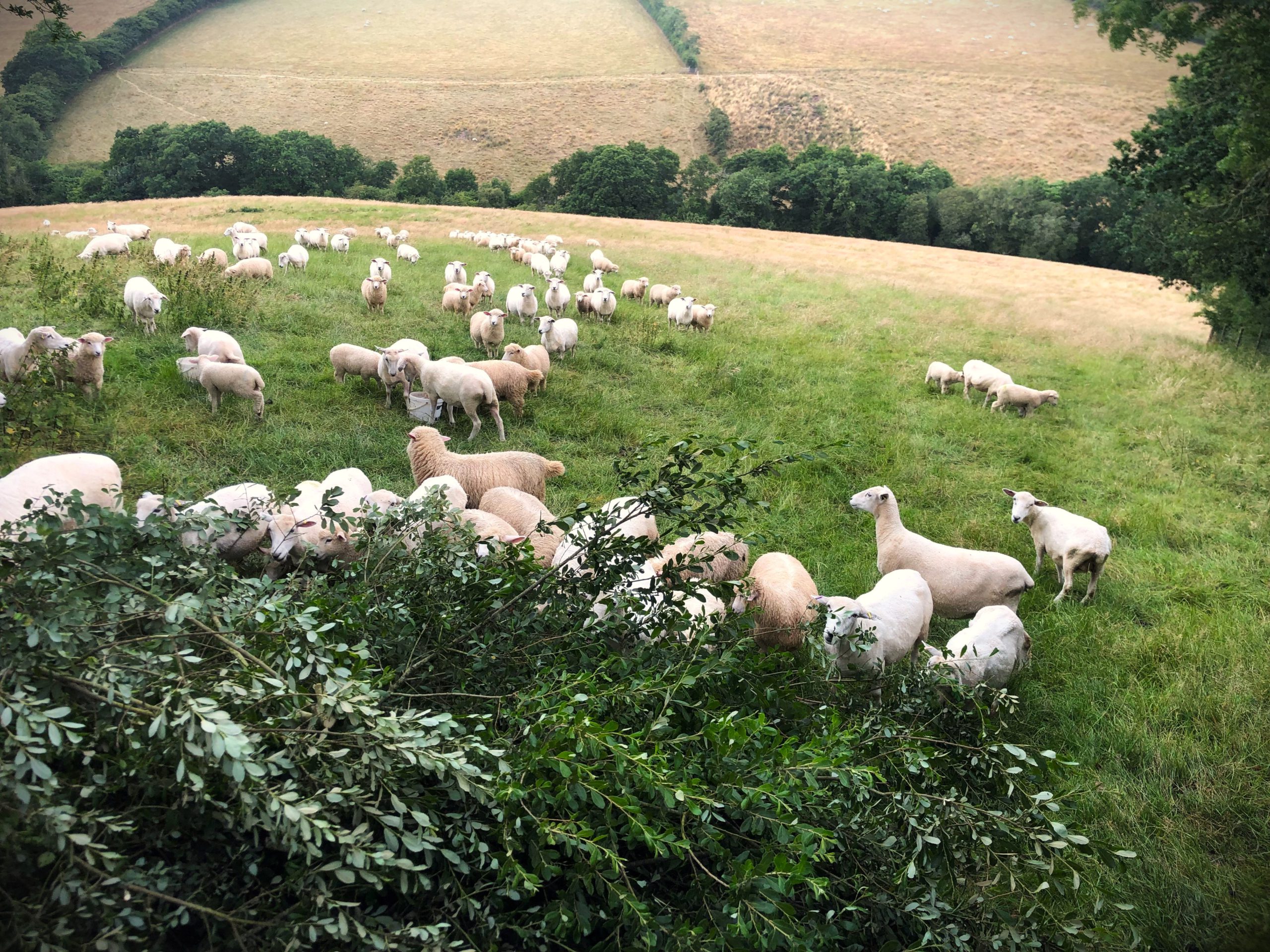
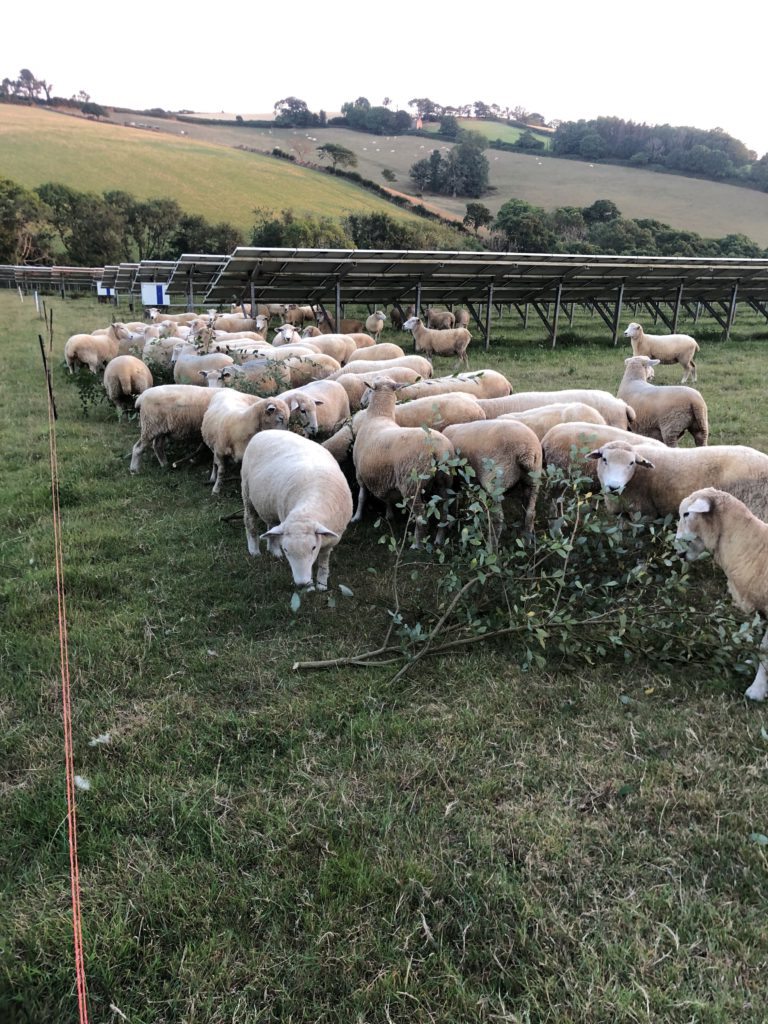
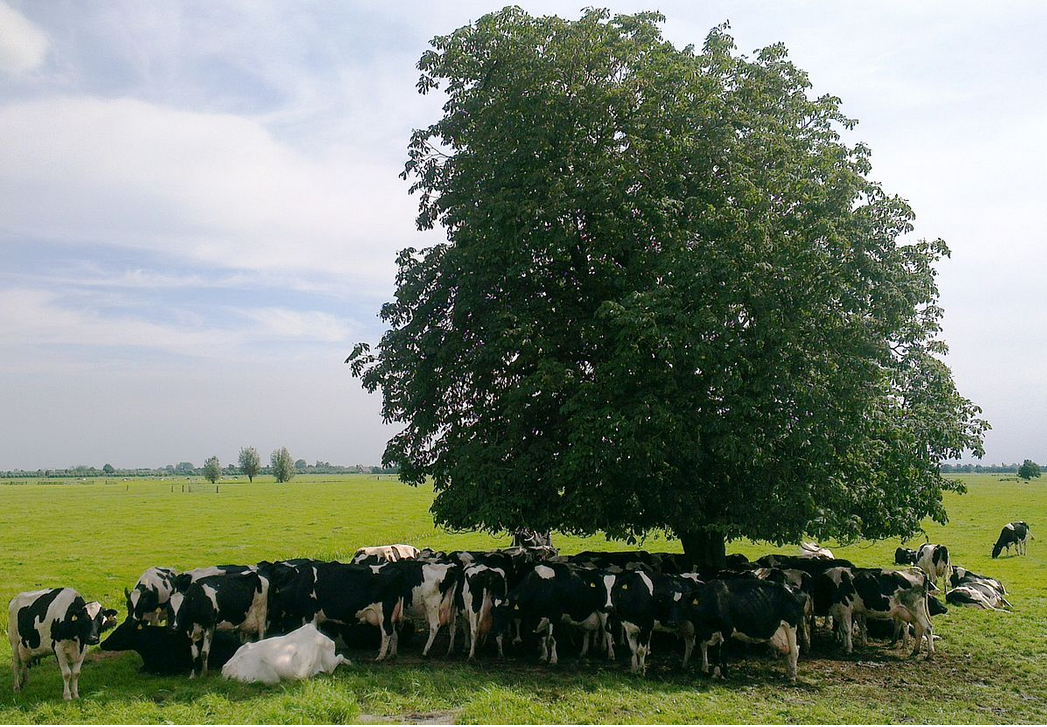
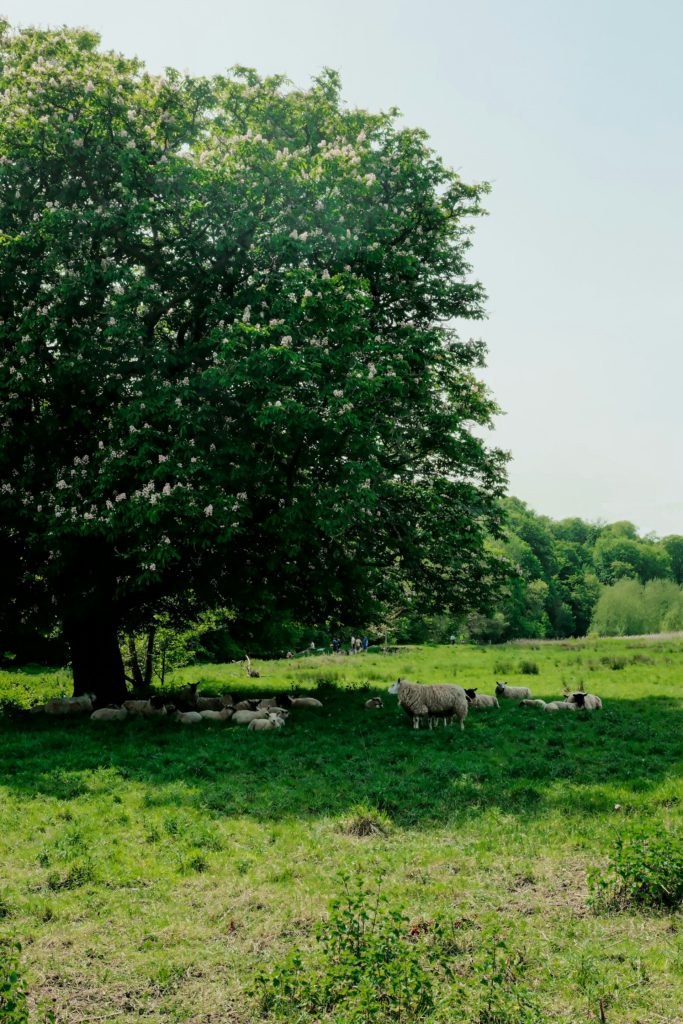
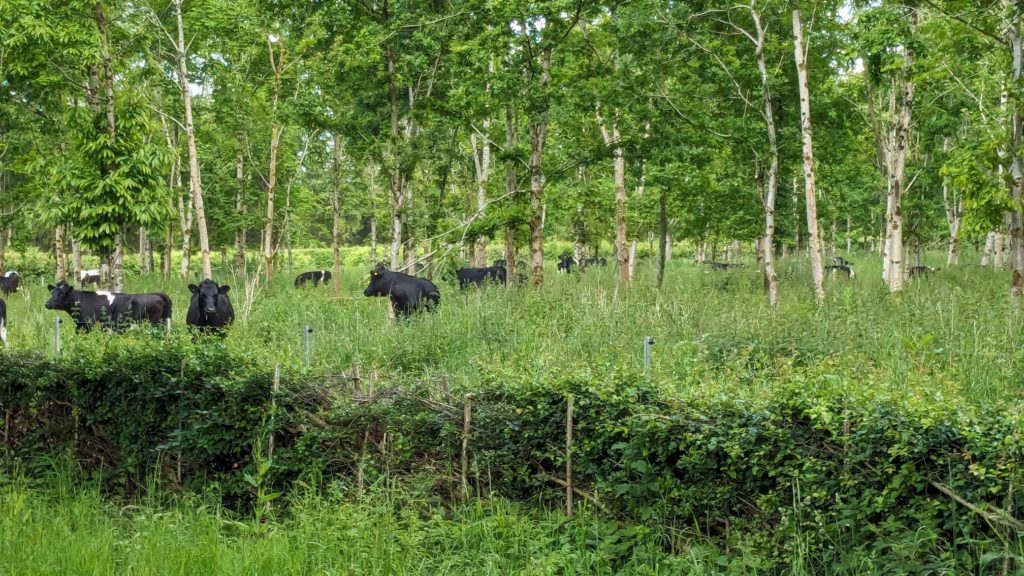
Recent Comments